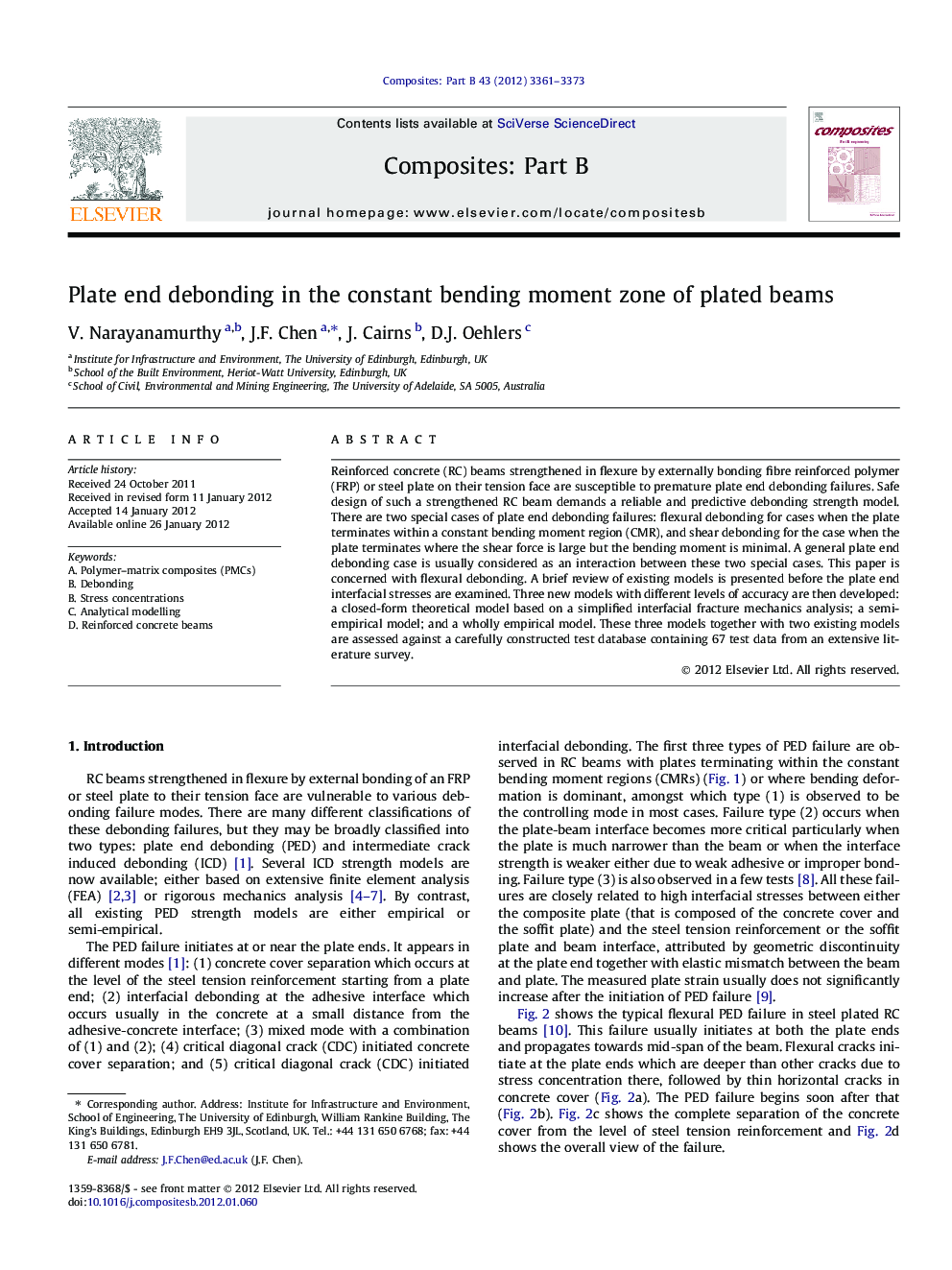| Article ID | Journal | Published Year | Pages | File Type |
|---|---|---|---|---|
| 819099 | Composites Part B: Engineering | 2012 | 13 Pages |
Reinforced concrete (RC) beams strengthened in flexure by externally bonding fibre reinforced polymer (FRP) or steel plate on their tension face are susceptible to premature plate end debonding failures. Safe design of such a strengthened RC beam demands a reliable and predictive debonding strength model. There are two special cases of plate end debonding failures: flexural debonding for cases when the plate terminates within a constant bending moment region (CMR), and shear debonding for the case when the plate terminates where the shear force is large but the bending moment is minimal. A general plate end debonding case is usually considered as an interaction between these two special cases. This paper is concerned with flexural debonding. A brief review of existing models is presented before the plate end interfacial stresses are examined. Three new models with different levels of accuracy are then developed: a closed-form theoretical model based on a simplified interfacial fracture mechanics analysis; a semi-empirical model; and a wholly empirical model. These three models together with two existing models are assessed against a carefully constructed test database containing 67 test data from an extensive literature survey.
